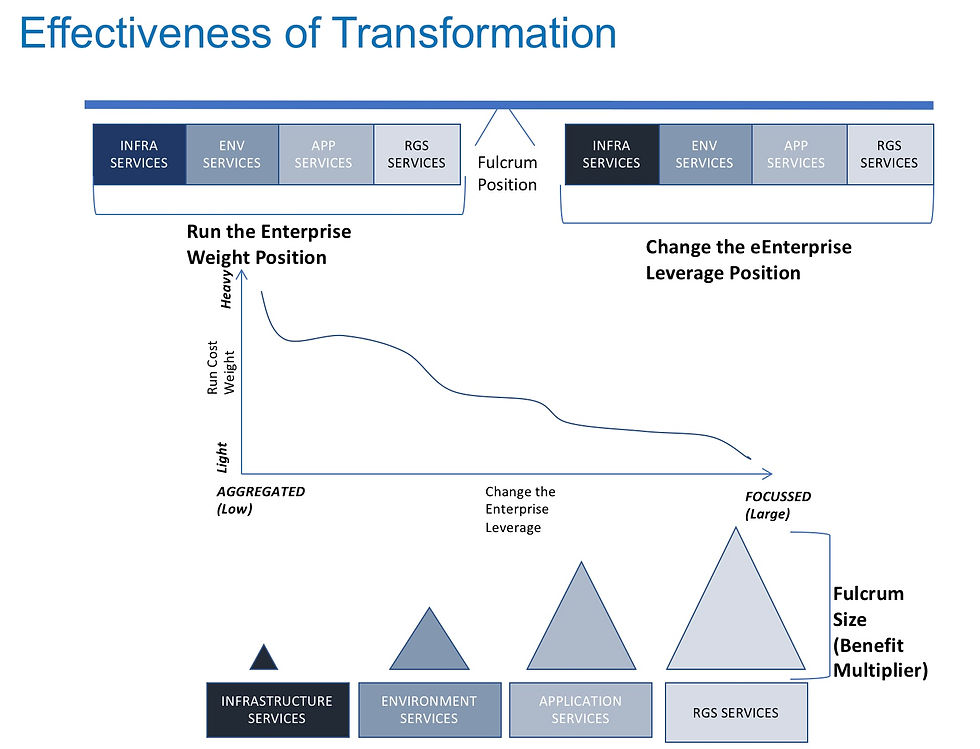Making Margin: Controlling the Costs of Revenue Generating Services (RGS)
- Simon Mackay

- Apr 11, 2018
- 3 min read
A Quick recap:
You can only sell the Revenue Generating Services (RGS) you have.
If you don't have it some customers will look elsewhere
If a customer is willing to wait, you will have a window to produce the RGS the customer needs.
If you take too long, the custoimer will look elsewhere.
Creation includes improvements to existing services be they RGS or Support Services (SS) and retirement of services
All change starts as a business change
New Concepts:
Support Services (SS) are split into two types
Internal Support Services (ISS)
External Support Services (ESS)
The Enterprise is made up of Core and Edge Services and Ways of Working (WoWs)
The Edge interacts with customer
Sells the RGS
Understands future customer needs in customers language
The Core only supports the Edge (Uses the defined SS)
The support service allow for two types of activity.
Support of customers consumption of RGS and
Support of internal creation of RGS & SS.
At MacKayser we consider all internal enterprise activity a support service and therefore a cost.
The SS's include the following:
Corporate
Management
Sales & Marketing
Finance
Procurement
HR
Facilities
Legal
Supplier Management
End User Support
Operational Support
Architecture
Development and Testing
Infrastructure
These dependent layer costs are based on actual, percentage or allocated costs associated to the Revenue Generating Service.
Controlling the costs of the SS per RGS will improve the margin.

We will break these support services (SS) into two types of support service.
Internal Support Service (ISS) and
External Support Service (ESS).
and consider the RGS as the Edge of the enterprise and SS as the Core of the enterprise.
To transition between the core and edge in either direction requires an innovation layer.
The life-cycle of RGS's are controlled by an Innovation Center of Excellence.

This innovation layer controls and governs the following:
New customer demand
The allowed ways if working (WOWs) in Core, Edge and Innovation layers
Definition of demand to requirements and tests
Definition of releases
Prioritization of demand and releases
Transition from Creation to Consumption (Core to Edge)
Selection and management of suppliers
SS cost management for each RGS
This is how we can ensure agile, high quality, repeatable and consistent transition of new or improvements to existing RGS.
It is the management and execution of this innovation layer where MacKayser are looking to partner with you to enable continual change and challenge the status quo.
Too often we see companies looking at technology change alone to deliver the broader business transformation.
This approach is unlikely lead to successful outcomes
The "Law of the Lever" illustrates this point.
It is impossible to shift a large weight (run the business costs) positioned closest to the pivot point, using the smallest fulcrum (benefit multiplier), with a smaller weight (change leverage) positioned equally close to other side of the pivot point.

The tech driven approach and its failures are well documented in academic, business and government reviews.
It is still a common approach today and the results are unsurprisingly similar to those of the past.
At MacKayser we challenge this status quo which is why we only deal with Enterprise Level transformations.
There are additional benefits of fully understanding the SS dependencies and costs of each RGS:
It allows us to tackle historic technical debt issues and address technical deficit before they become operational issues.
It allows us to scale pilots across the organisation rather than have an explosion of Ways if working with different tools and processes.
The consistent control of WOWs allows staff to be transferable rather than stuck to one area.
There are any more, please contact MacKayser for more information
If you would like more specific information or would like a follow up discussion to address your specific issues please email:


















Comments